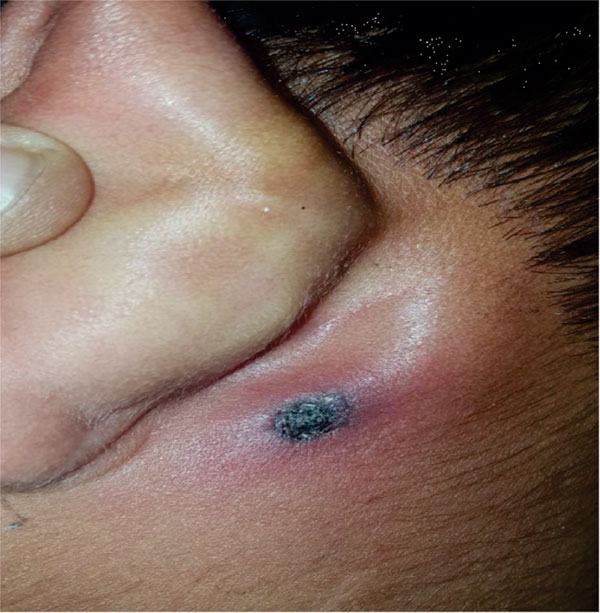|
|
|
Indian Pediatr 2020;57: 93 |
 |
Scrub Typhus Eschar
|
|
Nowneet Kumar Bhat 1*,
Neerul Pandita1
and Minakshi Dhar2
Department of 1Pediatrics, Himalayan
Institute of Medical Sciences and SRH University, Dehradun; and 2Department
of Medicine, All India Institute of Medical Sciences, Rishikesh;
Uttarakhand, India.
Email:
[email protected]
|
|
An 8-year-old male presented with fever, pain abdomen and vomiting for 6
days. He had tachycardia, tachypnea, left cervical lymphadenopathy,
hepato-splenomegaly and an eschar hidden behind left ear (Fig.
1). Laboratory work-up was non-contributory except thrombocytopenia
and elevated hepatic transaminases. Child was started on oral
doxycycline. IgM-ELISA for scrub typhus was subsequently reported
positive. He became afebrile within 36 hours, and was discharged after 7
days following normalization of clinico-laboratory parameters.
 |
|
Fig.1 Eschar behind left ear.
|
Eschar is a pathognomonic sign of scrub typhus and if
sought carefully, seen in up to two-third (7% - 68%) of pediatric cases.
It begins as a small-papule at the site of mite-bite, enlarges,
undergoes central-necrosis and acquires a black crust with surrounding
erythema, resembling a cigarette burn. Under appropriate epidemiological
setting, painless eschar in a child with fever and multi-system
involvement suggests scrub typhus. Other conditions associated with
eschar formation are spider-bite (painful), tularaemia (usually on
fingers), post-trauma, anthrax (pre-existing skin breach), some other
rickettsiosis, and disseminated mycosis.
|
|
|
 |
|

